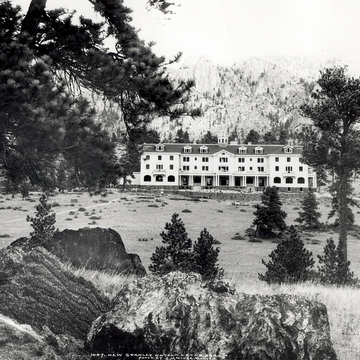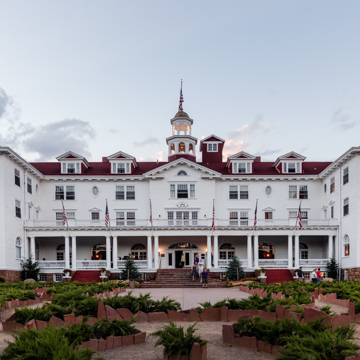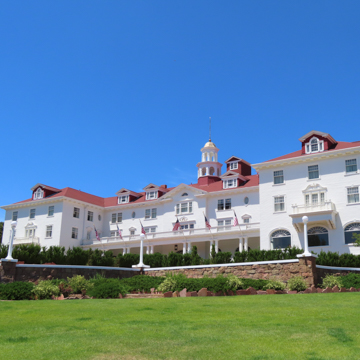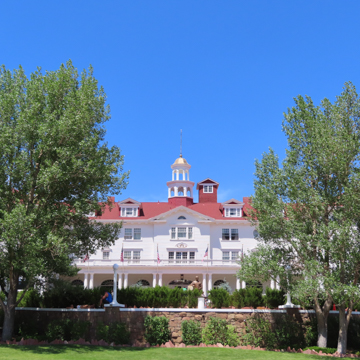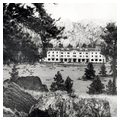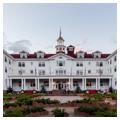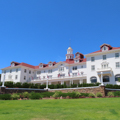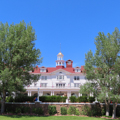Freelan O. Stanley and his twin brother, Francis, developed a photographic dry plate process allowing film to be sold in rolls, which they sold to George Eastman. They were also the inventors of the steam-powered automobile named for them. After contracting tuberculosis, Freelan moved to Colorado in 1903 for the climate cure. He bought 1,400 acres from Lord Dunraven to build his summer home and this magnificent hotel complex, one of the finest examples of Georgian Revival in Colorado.
Freelan, who fancied himself an architect, helped T. Robert Wieger design the 150-room complex. Twelve buildings are arranged in a row facing south across a meadow with unobstructed views of the surrounding mountains. The large scale and the sophisticated style of these white clapboard structures contrast markedly with the rugged setting.
From a rough-cut sandstone foundation the main hotel rises to fourth-floor dormers and double octagonal cupola. The symmetrical plan includes three wings, intersecting in an H pattern, with the side wings treated as bays. The pedimented entry bay descends to a generous veranda where guests may sit in bentwood chairs and gaze across Estes Park to Longs Peak. Six sets of paired, turned columns support the veranda's balustraded roof. Fenestration is consistent and highlighted by arched tops, fanlights, Palladian accents, and pedimented and ocular windows.
Inside, the Dunraven Tavern, MacGregor Dining Room, a music room, billiard room, and the many lounges and meeting rooms generally echo the Georgian Revival theme. Stanley himself designed the kitchen, one of the first all-electric kitchens in the country. The spacious, sunny lobby is laced with feathery arches and columns and has a grand staircase.
On the east side of the hotel, the Manor House (1912) mirrors the detail of the hotel in diminished scale. Stanley Hall, a 450-seat concert hall that was originally a casino, has a large pedimented and columned porch. A second smaller porch on the west side has triple sets of pillars supporting its roof. The Carriage House, east of Stanley Hall, initially sheltered the resort's fleet of customized Stanley Steamer “mountain wagons” that each carried a dozen passengers. Tourists might also enjoy the hotel swimming pool, tennis court, bowling alley, golf course, croquet courts, and an orchestra promenading around the grounds.
After Stanley sold the hotel in 1926, it weathered hard financial times when its frame construction made it hard to maintain and insure. Closed during World War II, it afterward opened intermittently during the summers. After a 1980s renovation, it is now open year round and enjoying a renaissance. Despite protests in the 1980s, a shopping center was constructed at the base of the 125-acre hotel site, compromising the view of the hotel and obscuring its entrance.














